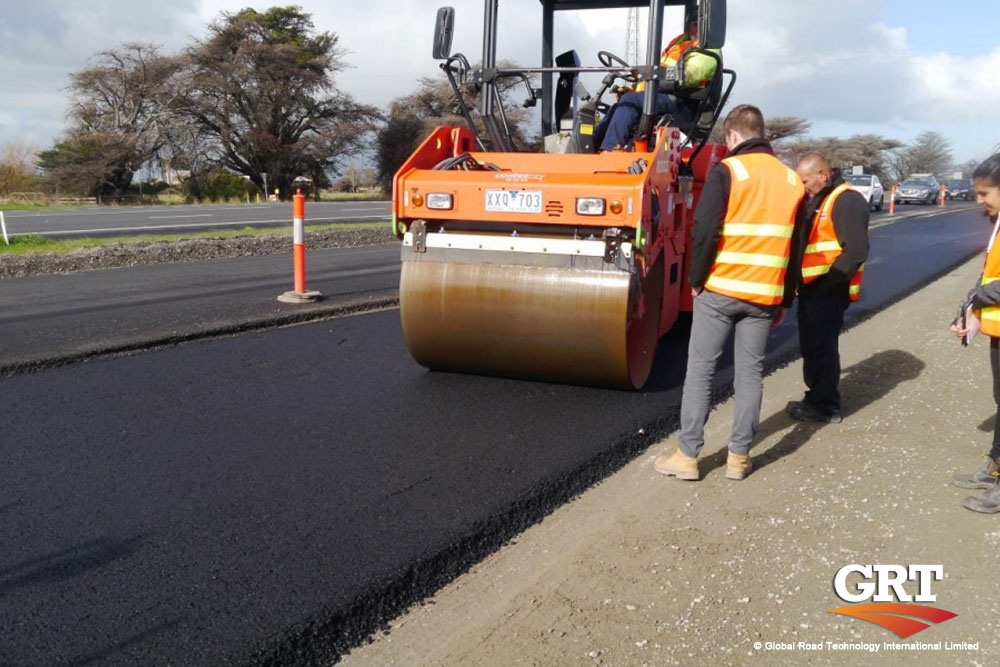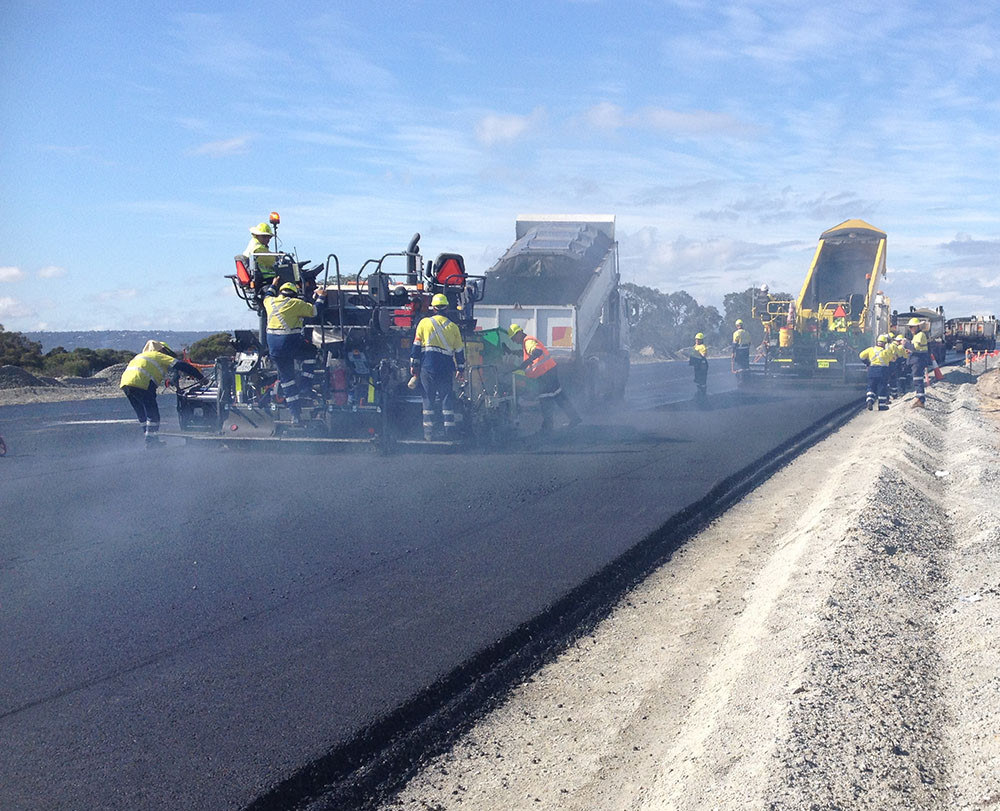Often times the best raw materials go into making either a truck or passenger car tyre. At its end of life, a tyre poses a great environmental challenge owing to its highly engineering nature, which renders it non-biodegradable. Landfilling only takes up more space and increases fire hazard risks in addition to harboring potential disease-causing insects in the rainy seasons. From its original formulation a tyre consists of natural rubber, synthetic rubber, plasticizers, carbon black, silica and other metallic components from the steel. From a circular economy point of view these constituents can find use in other fields which in the context of our discussion we focus on crumb rubber used to modify bitumen. Crumb rubber modified bitumen, its formulation chemistry and applications will be evaluated as the article seeks to understand the chemical fingerprint of the crumb rubber from its source, production of crumb rubber modified bitumen and its uses in pavement construction. The source of the crumb rubber is critical to behavior of crumb rubber modified bitumen although formulation parameters contribute to the end product utilized in the different applications.
In the beginning…
The use of bitumen and its modification dates back to around early 600 BC were bitumen containing mortar cemented both the foundation of burnt bricks and stone slabs. The 19th century saw the popularity of mixing bitumen and rubber but more as a substitute for rubber rather than as a modifier for bitumen. As time progressed the early 20th century scholars began to suggest and later on describe the colloidal structure of bitumen with the 1940s yielding patents on the bitumen modified with polyisobutylene. Neoprene latex began to be increasingly used for bitumen modification in North America in the 1950s. Crumb rubber modified bitumen was born in the 1960s with Charles McDonald being the first highway engineer to use crumb rubber in asphalt mixtures to improve performance of pavements. A few years later the first commercially acceptable styrene butadiene styrene thermoplastic elastomer was developed which later led to its incorporation in bitumen to improve temperature sensitivity whilst increasing resistance to permanent deformation.
Fast forward to the 1980s discussion on bitumen rubber technology between South Africa and Arizona Department of Transport in Phoenix led to the latter purchasing exclusive rights for the Arizona refining bitumen rubber technology. Morphology studies of elastomer modified bitumen reported swelling of polymers with polyethylene modified bitumen showing phase separation in addition to high manufacturing and compaction temperatures in the early 1980s. A five year period from 1987 to 1993 saw the establishment of the Strategic Highway Research Program with bitumen as one of the four study areas which culminated in the production of the Superior Performing Asphalt Pavement (SUPERPAVE) with emphasis on rheology. The 1990s marked an era of more investigations into morphology, thermal behavior, storage stability and aging of different polymer modified bitumen. The start of the millennium came with division of polymer modified research into two fields. Firstly, mechanisms of polymer modification and failure and secondly improving disadvantages of some polymer modified bitumen through sulphur vulcanization, addition of antioxidants and functionalization.

Are environmental regulations, health and safety concerns or potential profit loss a concern right now?
Where the rubber hits the road
The formulation chemistry of crumb rubber modified bitumen depends on swelling of rubber in hot bitumen and transfer of components within crumb rubber. Both rubber and carbon black absorb light fractions of the bitumen hence interaction might not be entirely of a swelling nature. The role of carbon black can never be underestimated as it could be as important as the rubber component. Having said that, the largest component in the tyre is the rubber therefore it would be imperative to discuss the swelling behavior of rubber. Diffusion is responsible for digestion and subsequent swelling of rubber in organic solvents. The degree of swelling is dependent on temperature of the system, digestion time and energy consumed during the digestion process. Amount of rubber absorbing the solvent increases until the solvent becomes uniform and attains equilibrium which depends on shape and number of crosslinks in the rubber and the compatibility of the solvent. The lower the molecular weight of the solvent the more readily it will diffuse into the rubber. Saturates and aromatics diffuse into the three-dimensional rubber networks of polyisoprene and polybutadiene linked with sulfur-sulfur bonds resulting in an initial rise in viscosity.
Bond dissociation energies of typical rubber networks are sulfur-sulfur at 425.30 kJmol-1, carbon-carbon at 618.3±15.4 kJmol-1 and carbon-sulfur at 713.3±1.2 kJmol-1. Consequently, it takes more energy to break carbon-sulfur bonds during the digestion process of crumb rubber in bitumen. Storage stability of crumb rubber modified bitumen is related to swelling of crumb rubber and sedimentation. Crumb rubber and low molecular weight bitumen fractions improve storage stability which is attributed to the decrement in dispersed non-dissolved crumb rubber particles. High content of crumb rubber shows good storage stability due to higher viscosity which limits sedimentation of crumb rubber particles. Type of hydrocarbon present in the rubber controls the extent and rate of reaction between rubber crumbs and hot bitumen. Natural rubber provides better elasticity and adhesion than synthetic rubber. Particle size of the rubber crumbs also affect the bitumen-rubber reaction as finer rubber swells and depolymerizes faster affecting more the bitumen phase than the dispersed phase and the opposite is true for coarse rubber particles.
Practical Applications and Implications

Two main methods are used to add crumb rubber to the bitumen. The wet process involves addition of crumb rubber directly to the bitumen prior mixing with the aggregate whereas in the dry process solid crumb rubber is added at the same time bitumen is blended with aggregates. Bitumen rubber is mostly used and specified in different asphalt applications as bitumen rubber asphalt and variations depend on the aggregate gradation, bitumen rubber continuously graded asphalt and bitumen rubber asphalt semi-open graded asphalt. Bitumen rubber can also be utilized in spray seals whereas in other applications warm mix technology such as Fischer-Tropsch wax can be used to reduce viscosity of bitumen rubber allowing for workability and pumpability. In practice use of warm mix technology in crumb rubber modified bitumen enables lower compaction temperatures compared to hot mix asphalt.
Constituents of crumb rubber based on its origin from end of life tyres play the most critical role in its applications in crumb rubber modified bitumen. The bitumen chemistry is paramount to the swelling behavior of rubber which is governed not only by rubber but also other components such as carbon black. The composite nature of crumb rubber enhances the complexity of the bitumen-rubber interactions although incentives of using warm mix additives with it comes with spin-offs in lowering energy and greenhouse gas emissions.
Your feedback is important to us. If you enjoyed reading this Global Road Technology industry update and found it informative, please let us know by leaving a REVIEW.
REFERENCES
Airey, G.D., Singleton, T.M., and Collop, A.C. 2002. Properties of Polymer Modified Bitumen after Rubber-Bitumen Interaction. J. Mater. Civ. Eng. 14:4. 344-354.
Cong, P., Xun, P., Xing, M., and Chen, S. 2013. Investigation of asphalt binder containing various crumb rubbers and asphalts. Constr. Build. Mater. 40. 632-641.
Dong, D., Huang, X., Li, X., and Zhang, L. 2012. Swelling process of rubber in asphalt and its effects on the structure and properties of rubber and asphalt. Constr. Build. Mater. 29. 316-322.
Lesueur, D. 2009. The colloidal structure of bitumen: Consequences on the rheology and on the mechanisms of bitumen modification. Adv. Colloid Interface Sci. 145:1-2. 42-82.
Lopez-Moro, F.J., Moro, M.C., Hernandez-Olivares, B., Witoszek-Schultz, B., and Alonso-Fernandez. 2013. Microscopic analysis of the interaction between crumb rubber and bitumen in asphalt mixtures using the dry process. Constr. Build. Mater. 48. 691-699.
Luo, Y., and Kerr, J. 2007. Bond dissociation energies. CRC Handbook of Chemistry and Physics. 65-98.
Navarro, F.J., Partal, P., Martinez-Boza, F., and Gallegos, C. 2004. Thermorheological behavior and storage stability of ground tyre rubber-modified bitumens. Fuel. 83. 2041-2049.
Renshaw. R.H. 1984. Bitumen-Rubber-Its Introduction and Development in South Africa. Annual Transportation Conference, Pretoria, South Africa.
Shen, J., Amirkhanian, S., Xiao, F., and Tang, B. 2009. Influence of surface area and size of crumb rubber on high temperature properties of crumb rubber modified binders. Constr. Build. Mater. 23:1. 304-310.
Xiang, L., Cheng, J., and Que, G. 2009. Microstructure and performance of crumb rubber modified asphalt. Constr. Build. Mater. 23:12. 3586-3590.
Yamaguchi, K., Sasaki, I., Nishizaki, I., Meiarashi, S., and Moriyoshi, A. 2005. Reinforcing Effects of Carbon Black on Asphalt Binder for Pavement. J. Japan Petroleu Inst. 48:6. 373-379.
Zhu, N.K.J., and Birgisson, B. 2014. Polymer Modification of Bitumen: Advances and Challenges. Eur. Polym. J. 54. 18-38.
Troy Adams
Troy Adams is the Managing Director of Global Road Technology (GRT) Specialising in Engineered Solutions for Dust Suppression, Erosion Control, Soil Stabilisation and Water Management. A pioneering, socially conscious Australian entrepreneur, Troy Adams is passionate about health and safety and providing innovative solutions that are cost-effective to the mining industry, governments and infrastructure sectors. Troy is also a tech investor, director of companies like Crossware, Boost, Hakkasan, Novikov and more.

